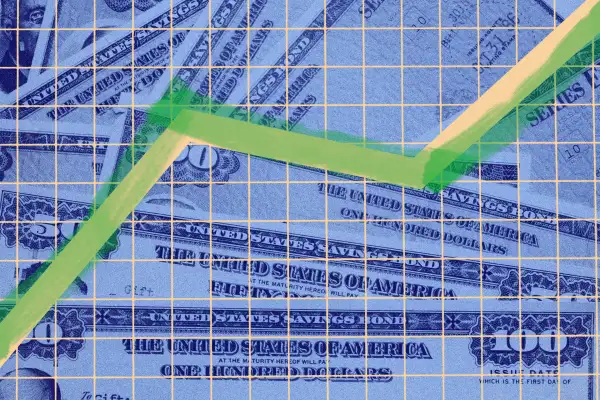Stubborn Inflation's Silver Lining: Higher I Bond Rates
Money is not a client of any investment adviser featured on this page. The information provided on this page is for educational purposes only and is not intended as investment advice. Money does not offer advisory services.

After a period of decline, the yield for Series I Savings Bonds, aka I bonds, is back on the rise.
The U.S. Department of the Treasury set the new annualized I bond rate at 3.98% for bonds purchased now through the end October. The new rate marks a slight increase from the previous rate of 3.11%, and it’s the first uptick since November 2023.
With built-in inflation protection, the rate increase for I bonds reflects the U.S. economy’s ongoing battle with consumer prices, which refuse to go down without a fight. On the bright side, the government-guaranteed bonds offer everyday savers and investors alike a safe way to hedge against rising prices.
At the zenith of the cost-of-living crisis, the I bond rate set a record at 9.62% in 2022. While the new rate is much lower than that, it comes with a perk that 2022 I bonds did not have: a 30-year fixed rate of 1.1%.
Current I bond rates
The overall I bonds rate is a combination of its fixed rate, which does not change over the life of the bond, and a variable rate that is based on the previous six months of inflation. In this case, that’s inflation from October to March. The result is today’s annualized rate of 3.98%.
The return on an I bond, once purchased, is guaranteed for six months. The fixed rate at the time of purchase is locked in for the life of the bond, up to 30 years. The variable rate is recalculated every six months based on recent inflation trends.
The design ensures that inflation doesn’t erode the value of the investment and — with a respectable fixed rate — may even come with modest earnings on top of inflation. Other perks of I bonds include that any earnings aren’t subject to state taxes, and federal taxes are deferred until the bonds are cashed out.
The bonds have some key caveats, as well. They must be bought digitally through TreasuryDirect.gov and have a $10,000 annual purchase limit. They must be held for at least one year; bonds cashed out within five years of purchase incur a three-month interest penalty. (Paper I bonds, which were purchasable with tax refund money, were discontinued in January.)
“I bonds are a unique investment, one of the safest in the world, because they are backed by the U.S. government and provide protection against official U.S. inflation,” I bond expert David Enna wrote on TIPS Watch. “No matter how high it rises.”
Enna founded TIPS Watch, a site where he analyzes Treasury Inflation-Protected Securities (TIPS) and I bonds, in 2011. Since then, he’s begun predicting I bond rates with remarkable accuracy. For instance, three days before the Treasury Department announced the new I bond rate for May, he got it exactly right: 3.98%.
While the variable rate is basic arithmetic (it's the rate of CPI inflation over six months), the fixed rate portion is trickier. The Treasury Department has never confirmed how it calculates this rate, but Enna and other I bond wonks believe they have cracked the code: Take the average five-year TIPS real yield from the past six months and multiply it by 0.65.
Since the fixed rate portion of the formula has no set legal definition and this was the first I bond rate adjustment since President Donald Trump took office, however, I bond experts were anxiously watching to see if the new administration would follow the same pattern. For now, Trump’s Treasury Department is staying predictable on this.
How do I bonds stack up?
As a conservative, long-term investment, there’s no option truly like I bonds given their safety and tax benefits. But if you're looking strictly at returns, there are several other safe options out there with predictable yields — though they often come with caveats of their own.
For instance, a handful of financial institutions are offering certificates of deposit (CDs) with rates of 4% or more.
- Barclays: 12-month CD with 4% annual percentage yield (APY)
- Discover Bank: 12-month CD with 4% APY
- BCU Credit Union: 5-month CD special with 4.35% APY
- Marcus by Goldman Sachs: 14-month CD special with 4.4% APY
CDs often have minimum opening balance requirements, typically starting at $500. Interest penalties of three to four months are common if the money is withdrawn before the maturity date. Also keep in mind that the highest rate available is usually a promotional deal that shrinks after the introductory period is over.
CD rates are also not tied directly to inflation. Given that both consumers and businesses are gearing up for another wave of price increases spurred on by tariffs imposed by Trump, I bonds may soon be coming back in vogue.
More from Money:
11 Best High-Yield Savings Accounts
How I Bought a Home With Zero Down Payment and Scored a 4.75% Rate




